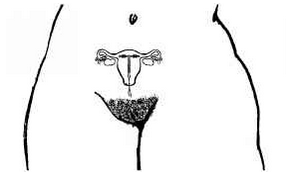 When I was taught about China’s one-child policy in school – the forced late-term abortions, the injections into the soft spots of babies’ heads as they crowned – the focus was on the cruelty to the unborn or just-birthing life. I don’t recall that my teacher mentioned, let alone lamented, women’s reproductive rights. I don’t remember hearing about forced sterilisation or forced insertion of IUDs. And in 2002, 2008 and 2011, US immigration repeatedly refused one Chinese woman’s asylum application on the grounds that the forced insertion and re-insertion of IUDs did not count as “persecution”.
When I was taught about China’s one-child policy in school – the forced late-term abortions, the injections into the soft spots of babies’ heads as they crowned – the focus was on the cruelty to the unborn or just-birthing life. I don’t recall that my teacher mentioned, let alone lamented, women’s reproductive rights. I don’t remember hearing about forced sterilisation or forced insertion of IUDs. And in 2002, 2008 and 2011, US immigration repeatedly refused one Chinese woman’s asylum application on the grounds that the forced insertion and re-insertion of IUDs did not count as “persecution”.
I’ve had an IUD – the copper coil, the one most-commonly administered in China – and like most women found the insertion of it painful; like a significant number of women, I also had ongoing problems with it and chose to have it removed. The whole thing was an unpleasant enough experience even when I’d chosen it freely as the best option for me; think what it must be like to have a hard, cruciform object forced through the tiny mouth of your cervix when you haven’t chosen but have actively resisted this. It’s a plastic t-shape, usually 3.2 by 3.5cm, that (albeit with arms folded for insertion) gets pushed into a woman’s uterus – which, incidentally, is typically only 7.6 by 4.5cm – through an opening sometimes described as being the size of a pin-head.
I think you get the picture.
And, of course, it isn’t only the physical pain and invasiveness of the procedure that matters, but also what a forced IUD entails: forced infertility, which is technically only temporary but if you aren’t allowed to remove the device then as good as permanent; in many cases, increased pain and heavier bleeding during periods; frequently, pain during sex. And then, complications can be serious: a report from China’s own state family planning council showed at least 23 percent of IUDs were defective, leading to problems that could require surgical removal or hysterectomy. If the Chinese state – notoriously averse to the publication of such statistics – admits this figure, then it is very unlikely to be an underestimate.
But, you know, it’s interesting what gets validated as “persecution,” and what, in the legal language of this particular case, gets dismissed as the “wearing” of an IUD. In case there are readers or members of judiciaries who still feel unsure: one does not wear an intrauterine device. Wearing is in fact defined as having something on one’s body, not in it. Perhaps if as part of their training all judiciary types had to have IUDs inserted into whichever lower-body cavity they have available, this language – and the rulings – would change. (What makes this and similar rulings all the more suspect and appalling is that in 2004 another Chinese woman was denied asylum in the US because she had “clearly assisted or participated in the persecution of others by, inter alia, standing guard at a ‘family planning clinic’ in China over detainees who were scheduled to have [IUDs] inserted against their will.” One and the same legal body ruled in both cases, yet the practice was persecution when a woman could be repudiated for it, but not when she needed protection from it.)
Forced sterilisation – having your tubes tied – and forced abortion, or the euthanasia of crowning babies, though: the US immigration judiciary does term this “persecution” and grounds for asylum. Which betrays that the judiciary, like my teacher, care a great deal more for unborn infant life than for female reproductive rights and bodily integrity.
Many more women are sterilised than men in China; reliable figures are difficult to come by (male and female sterilisations are usually given together in one sum in statistics), but the most conservative minimum seems to be a ratio of 3:1. In 1983, the year of the sudden high tide in birth control operations, 16 million women were sterilised, to only 4 million men. Meanwhile male sterilisation is a less invasive, less permanent and less dangerous operation. And on top of the female sterilisations are the forced IUDs and forced abortions… in short, female bodily integrity is under the more severe attack. Would China, which received the United Nations Population Award in 1983, get a UN award now if it opted to chemically castrate the 33 million excess males that are said to pose a threat to “social stability” with their clamouring testosterone supposedly inducing them to rape and use prostitutes? Is it strange that the solution which more readily occurs, even in authoritarian China that has never seemed squeamish about medical interventions, is to import women from other nations to mop up the unspent sexual violence? Tens of thousands of women are already coming in, it seems: some desperate, some coerced, some tricked, some trafficked. As always the answer seems to be to let women take it in the neck for the species.